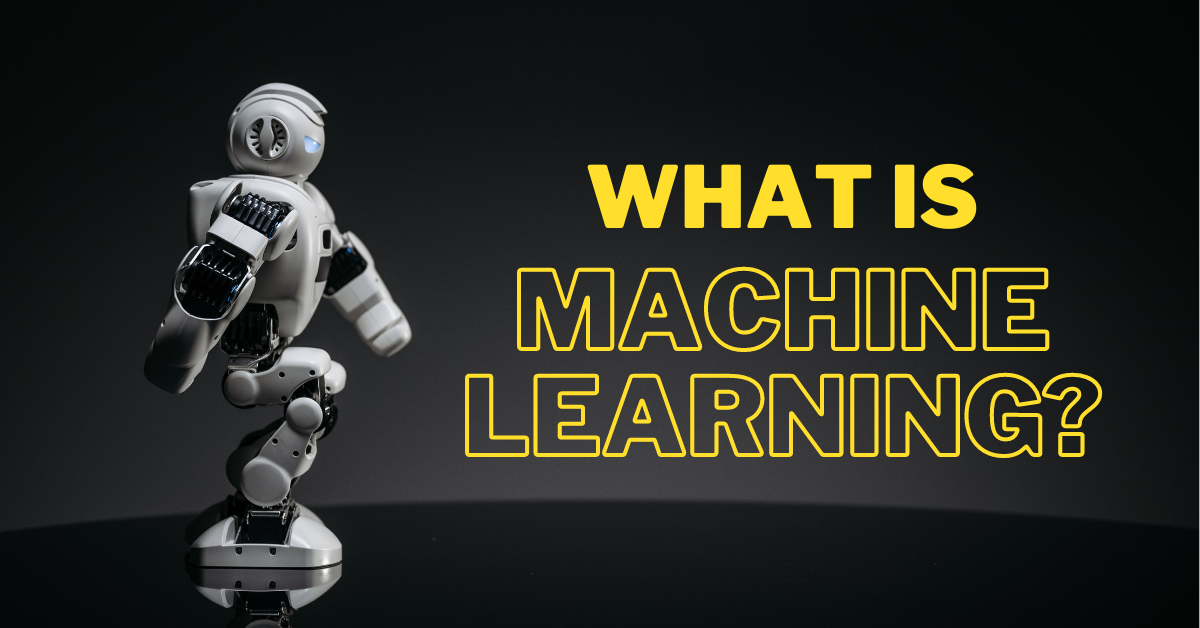Introduction
Data science and machine learning fusion have become the cornerstone of innovation recently. These two fields work in tandem to extract valuable insights and predictions from data, revolutionizing industries from healthcare to finance. This blog post will dive into machine learning, its definition, role in data science, types, applications, algorithms, interview questions, and prospects.
Machine Learning Definition in Simple Words
Machine learning is a subset of artificial intelligence (AI) that empowers computer systems to learn from data and improve their performance over time without explicit programming. In simpler terms, it’s the process of training machines to recognize patterns in data and make accurate predictions or decisions based on those patterns. Machine learning algorithms allow computers to evolve and adapt as new data becomes available, enhancing their accuracy and functionality.
The Role of Machine Learning in Data Science
Data science encompasses extracting, analyzing, visualizing, and interpreting meaningful insights from data. Machine learning drives this process by enabling data scientists to build models that automatically improve their performance through experience. Machine learning empowers data scientists to derive actionable insights that inform decision-making and innovation by uncovering hidden patterns, trends, and relationships within large datasets.
Types of Machine Learning - Supervised and Unsupervised Learning in Data Science
Machine learning is categorized into two main types: supervised and unsupervised.
- Supervised Learning: In this approach, the model is trained on labeled data, where the input and the corresponding desired output are provided. The algorithm learns to map inputs to outputs by generalizing from the labeled examples. This type of learning is used for tasks like classification and regression.
- Unsupervised Learning: Unsupervised learning involves training models on unlabeled data, where the algorithm explores the inherent patterns and structures within the data without predefined outcomes. This type of learning is commonly used for clustering and dimensionality reduction tasks.
Applications of Machine Learning
Machine learning finds applications across diverse industries and domains, showcasing its versatility and impact on the modern world. Some noteworthy applications include:
– Healthcare: Predictive models for disease diagnosis and treatment outcomes.
– Finance: Fraud detection, credit scoring, and stock market analysis.
– Retail: Customer behavior analysis, demand forecasting, and recommendation systems.
– Automotive: Autonomous driving, vehicle performance optimization, and traffic prediction.
– Natural Language Processing (NLP): Sentiment analysis, language translation, and chatbots.
– Image Recognition: Facial recognition, object detection, and medical image analysis.
Machine Learning Algorithms Examples
Machine learning algorithms form the foundation of data-driven decision-making. Here are a few examples of commonly used algorithms:
- Linear Regression: Used for predicting a continuous output based on input features.
- Decision Trees: Employed for classification and regression tasks, creating a tree-like model of decisions.
- Random Forest: An ensemble technique that uses multiple decision trees for enhanced accuracy.
- Support Vector Machines (SVM): Suitable for classification and regression, finding a hyperplane that best separates data points.
- K-Means Clustering: Utilized for partitioning data points into clusters based on similarity.
Machine Learning Interview Questions and Answers
Preparing for a machine learning interview requires a solid understanding of key concepts and algorithms. Here are some common interview questions and their answers:
Q: What is overfitting, and how can it be prevented?
A: Overfitting occurs when a model performs well on training data but poorly on unseen data. Regularization techniques and using more training data can help prevent overfitting.Q: Explain the difference between supervised and unsupervised learning.
A: Supervised learning involves labeled data with input-output pairs, while unsupervised learning deals with unlabeled data and focuses on finding patterns within the data.
Machine Learning Coding Interview Questions
Coding interviews for machine learning positions often assess practical implementation skills. Here are a couple of coding interview questions:
- Q: Implement a basic linear regression model using Python’s libraries.
- Q: Write a Python function for K-means clustering on a dataset.
Machine Learning or Data Science: Which Has a Better Future?
The prospects of both machine learning and data science remain incredibly promising. While they are interconnected, each field offers distinct opportunities. Data science encompasses a broader spectrum, including data collection, cleaning, visualization, and domain-specific analysis. On the other hand, machine learning focuses on developing predictive models and algorithms that can automate decision-making.
In conclusion, the synergy between machine learning and data science reshapes industries and drives innovation. The marriage of data-driven insights and predictive algorithms transforms how businesses operate, medical diagnoses are made, and technology interfaces with our daily lives. As we journey into the future, the collaboration between these fields will continue to push the boundaries of what’s possible in technology and data-driven intelligence.
FAQs
Training computers to learn from data and make predictions.
Machine learning enhances data analysis by automating insights.
Supervised: Labeled data for predictions. Unsupervised: Finding patterns in unlabeled data.
Both fields are vital; ML automates decisions, while data science encompasses broader analysis.


